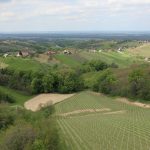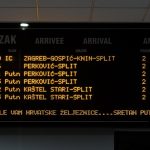While having increased in popularity over the last couple of years owing primarily to active tourism, the Dalmatian hinterland tends to live in the shadow of its coastal cousin, but is all that about to change?
As Poslovni Dnevnik writes on the 3rd of December, 2018, the calculations of the Institute for Croatian Tourism show that the number of overnight stays in Split-Dalmatia County could rise by 30 percent, mostly in the Dalmatian hinterland, by more than 200 percent. The study in which these figures were presented was entitled “Measuring Sustainability of Tourism in Practice”.
Tourism Institute researcher Zoran Klarić explained that Split-Dalmatia County tourism would be able to achieve a presumed growth of 30 percent, but only if certain obstacles are dealt with and removed before that goal, Slobodna Dalmacija reports.
“When it comes to the biggest development obstacles, we’ve come across an unacceptable situation with waste disposal, a power system on the edge of durability, a water supply system that depends on a single source in the case of Split, inadequate drainage, and very weak traffic power, plus parking spaces,” said Klarić.
He explained that tourism in that particular county was explored through five parts: Split, the Split riviera, the Makarska riviera, the Dalmatian hinterland, Brač, Hvar, and Vis. In addition to the Dalmatian hinterland, which could account for 200 percent growth, the biggest potential for growth lies on the nearby island of Brač, where calculations show potential of up to 50 percent growth, Slobodna Dalmacija writes.
Through the additional number of guests who could come to Croatia over the coming years, the institute calculated that the potential increase of tourists could be as much as 250,000 per year. According to estimates, the largest number of overnight stays would be made by Makarska riviera (two million) followed by the Split riviera (one million and 950 thousand), while Split would see as many as 670,000 overnight stays realised.
In the coming years, the number of hospitality and tourist zones could increase, to 145 with a total of 95,000 beds on offer.
“It’s almost twice the capacity available today in this type of accommodation,” the institute noted, adding that there is currently no indication that the growth of tourism in private accommodation which otherwise currently accounts for about 80 percent of Split-Dalmatia County’s overall accommodation capacity today will be limited.
Despite these indicators, which can be taken in both a positive and a negative way, tourism has some limitations in parts of the aforementioned county. The lack of labour is a big problem, and one which will continue to grow, and the Makarska riviera has a particular issue with its overall beach capacity.
Make sure to stay up to date with our dedicated travel and lifestyle pages for more. If you’re interested solely in the Dalmatian hinterland, make sure to follow Total Inland Dalmatia.







